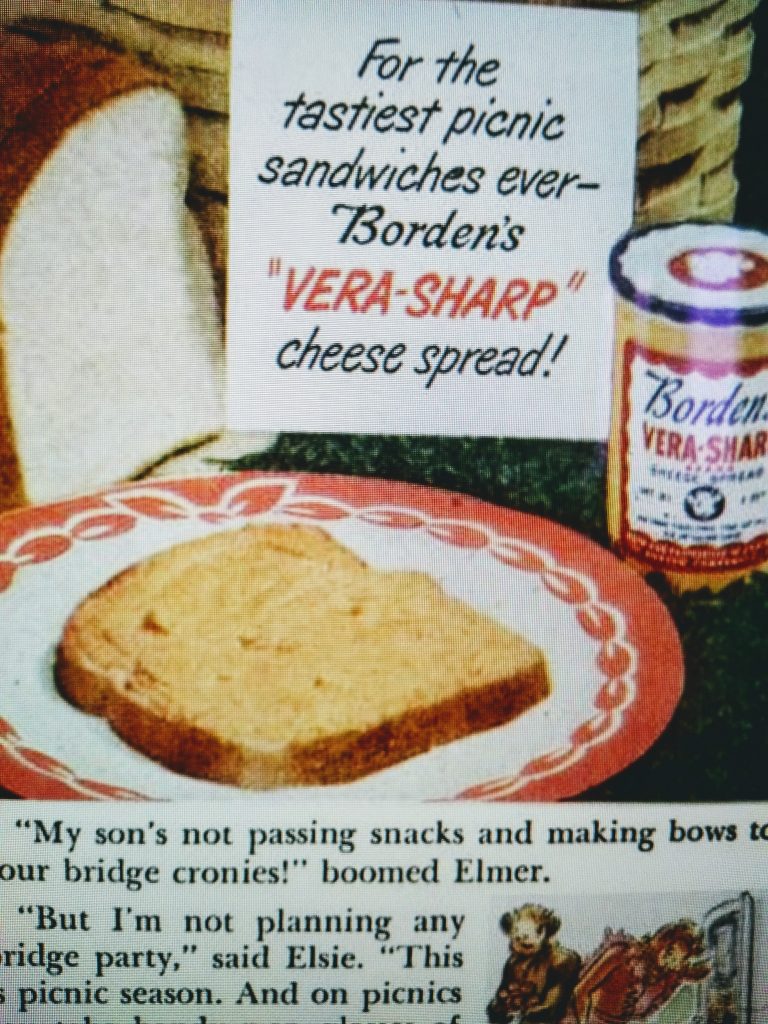A high-toned and prescient wine tasting was held in Baltimore, Maryland in 1948, which I discussed in my previous post. The Borden Creamery contributed cheese including a process type, Vera-Sharp. You see it below from a period ad in Life magazine, the picture magazine emblematic of 20th Century mass-culture America.
Borden extensively advertised processed cheese from the 1940s through the 1960s. The company was finally sold to venture capitalists in New York. The dairy component and other food businesses of Borden (pasta an important line) were spun-off.
From our determinations, it appears today two food companies, one in Texas, the other in Mexico, make Borden-brand cheese under license, with no other connection to the original business.
Borden’s slogan “Elsie the contented cow” still has currency some 60 years after its heyday. Beloved consumer trade names can long endure in the public mind.
But all to say, cheese slices and other Borden-brand products are still available. Not spreads from what I can tell, it’s all chunks, slices, singles. And strings. Shreds too, you know.
Most of the current line seems real cheese but some is the emulsified type that first emerged in the early 1900s, working a revolution in food technology.
At the Baltimore tasting Vera-Sharp and apparently Wej-Cut, a spreadable cream cheese, represented the newer process type. The other cheeses tabled were the traditional types, American or imported.
Why the process cheeses? I’d think Borden sponsored the cheese table and wanted them there. Or perhaps the committee organizing the tasting simply liked them. Cheese selection in regional America was probably limited at the time, too, a few years after WW II.
Process cheese, of which there are numerous, delphic varieties, remains popular in English-speaking countries and other places. We like it, and stock one of the Kraft brands, usually.
I prefer when the slices are not individually wrapped and now know this type as “stacked”. I buy Kraft Real Cheddar which is similar to the stacked process cheese I recall from the 1960s, except today it comes in an oblong shape double-stack – you can’t buy just one.
I’m not sure how exactly it is made but would think it’s process cheese with some real cheese blended in.
The pimento-flecked type we used to get decades ago in a single stack is gone with the wind, I believe. There was a white stack too, a Swiss-style, distantly. Where did that go?
It’s incorrect in evolved food circles to admit such likes. The power of local, organic, natural, non-GMO sends technologically-driven foods to Coventry, at least as far as many will admit.
But would real cheese have matched better with even select wines than Wej-Cut in 1948 Baltimore, or in every case? I wasn’t there, but will retain an open mind.
Note re image: image derives from the Life Magazine ad linked in the text. All intellectual property therein belongs solely to the lawful owner, as applicable. Used included for educational and research purposes. All feedback welcomed.

